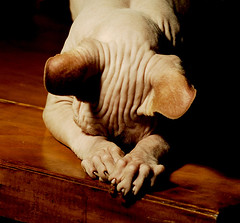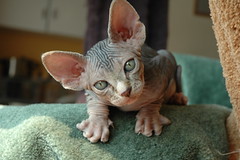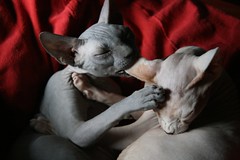In 2021, we got a pair of kittens from a rescue organization. One of them, Grace, was sheer easy mode. Cute, low maintenance, gentle with her claws and teeth, not a big lap cat, but that’s ok. The other, Horatio, was very sweet and cuddly, a fluffy little orange boy who was underweight for age and ended up being sick all the time – we were at the vet almost weekly for a while there. And the vet finally said “I think we should check bile acids.”
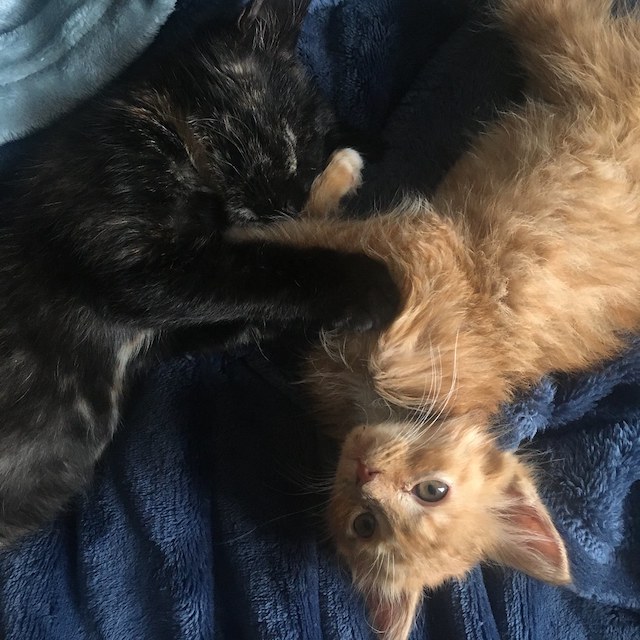
Bile acids aid in digestion, and they are, in essence, recycled by the liver as it processes what comes out of the gastrointestinal tract. A portosystemic shunt is an extra blood vessel (in the simple case) that routes blood around the liver, so the kinds of toxins that the liver is designed to filter keep circulating. Testing for levels of bile acids before and after a meal is a clever way of seeing whether the blood is flowing correctly – if it is, acids secreted in response to the meal will be promptly recycled. If not, they just keep floating around, hinting that other stuff is building up in the blood. In particular, ammonia compounds, and they can cause terrible symptoms – lethargy, vomiting, disorientation. Liver shunt is a developmental defect, and while the effects can be managed with diet and medication, the prognosis is poor. In the right cases (simple, one big vessel, rather than complex, with a lot of little ones) surgery offers a chance at a normal life. The detouring vein is fitted with a ring containing absorbent material that, over time, slowly narrows the errant vessel, and the blood follows the path of least resistance right into the liver, as intended.
We were fortunate that Horatio was diagnosed before receiving surgery – some cats are discovered to have this defect only after they fail to recover from a routine desexing procedure. And Horatio was fortunate that we were easily able to manage his special diet and medication to keep him healthy and growing, and willing to pursue surgical correction. He was also lucky to be a perfect candidate – and we were lucky that he was a perfect little gentleman in the car when we drove him two hours to the hospital at the University of Pennsylvania’s Veterinary School, where our regular veterinarian referred him so he could be treated by veterinarians who had actually done this surgery before.

We had a few hiccups getting him onto the surgery schedule, but when the day came, everything went as well as could be hoped. The only real surprise seemed to be that he needed a relatively large ring – a size usually needed only for dogs. We found this pretty charming, because we joke that he’s our little golden retriever: friendly, unflappable, and in love with his tennis ball. The surgery protocol called for a 3-day stay, but after the first day or so, that’s often just to ensure that the animal is getting an appetite back, and Horatio bounced back more or less right away. They invited us to pick him up early, saying, “We’re just sitting around watching him eat!” We got him home, and our other cats accepted him back almost right away (our third cat didn’t love his cone at first but got over it). His incision healed promptly, and his first follow-up bile acids test was normal. All of that is wonderful, but that’s not the marvel.
It’s not unusual (although also not universal) for cats with liver shunt to have bright copper-colored irises. That is also a normal eye color for cats, but in liver-shunt cats whose genetic trait for eye color is lighter, another buildup is probably to blame. Horatio had very arresting, deep, copper-colored eyes.

It took a few months, but his eyes did start to lighten, and by about 7 months after surgery (during which he was weaned off his special diet and medications with no ill effects), they were yellow.
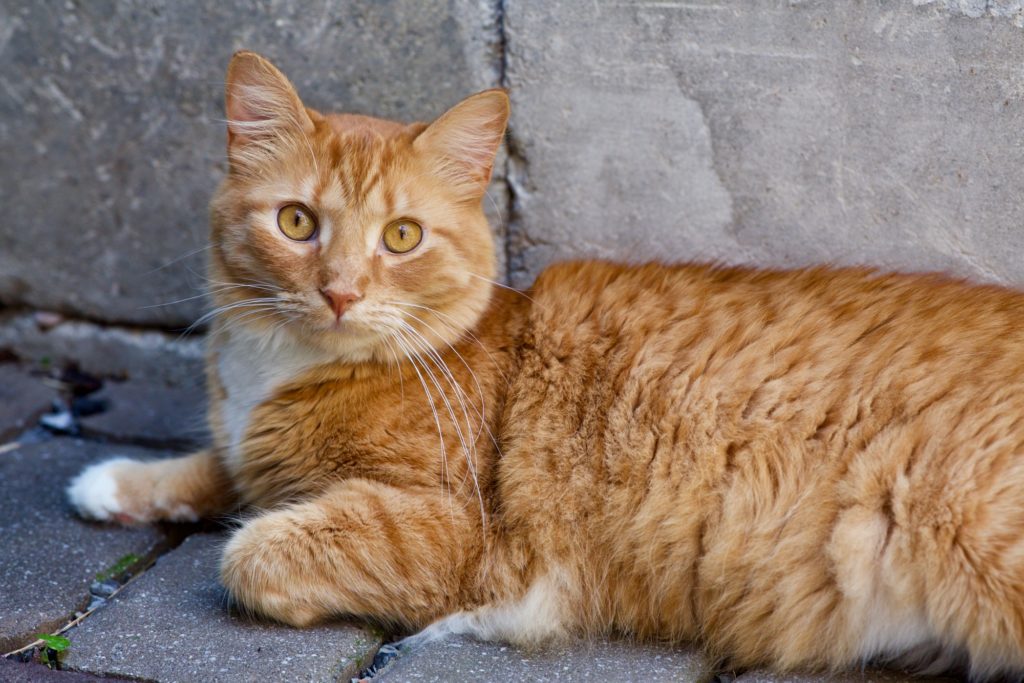
Seeing him now, playing chase with the other cats, hanging out and watching the birds, being a cute lap cat, it’s hard to believe he was ever so frail and sick. And while his coppery eyes were gorgeous, we are more than happy to see this clear evidence, every day, that the surgery worked.
Would you like to use photos of Horatio’s eye-color change? Send me an email and let’s talk!





